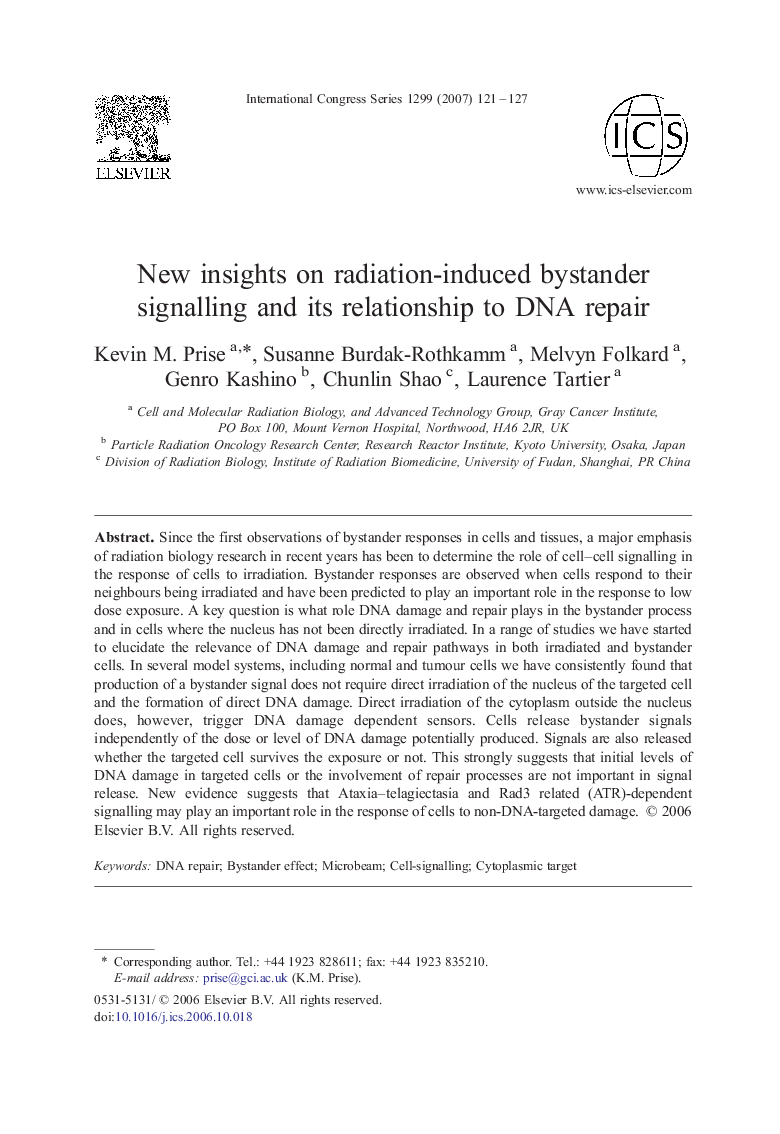| Article ID | Journal | Published Year | Pages | File Type |
|---|---|---|---|---|
| 2576718 | International Congress Series | 2007 | 7 Pages |
.Since the first observations of bystander responses in cells and tissues, a major emphasis of radiation biology research in recent years has been to determine the role of cell–cell signalling in the response of cells to irradiation. Bystander responses are observed when cells respond to their neighbours being irradiated and have been predicted to play an important role in the response to low dose exposure. A key question is what role DNA damage and repair plays in the bystander process and in cells where the nucleus has not been directly irradiated. In a range of studies we have started to elucidate the relevance of DNA damage and repair pathways in both irradiated and bystander cells. In several model systems, including normal and tumour cells we have consistently found that production of a bystander signal does not require direct irradiation of the nucleus of the targeted cell and the formation of direct DNA damage. Direct irradiation of the cytoplasm outside the nucleus does, however, trigger DNA damage dependent sensors. Cells release bystander signals independently of the dose or level of DNA damage potentially produced. Signals are also released whether the targeted cell survives the exposure or not. This strongly suggests that initial levels of DNA damage in targeted cells or the involvement of repair processes are not important in signal release. New evidence suggests that Ataxia–telagiectasia and Rad3 related (ATR)-dependent signalling may play an important role in the response of cells to non-DNA-targeted damage.
